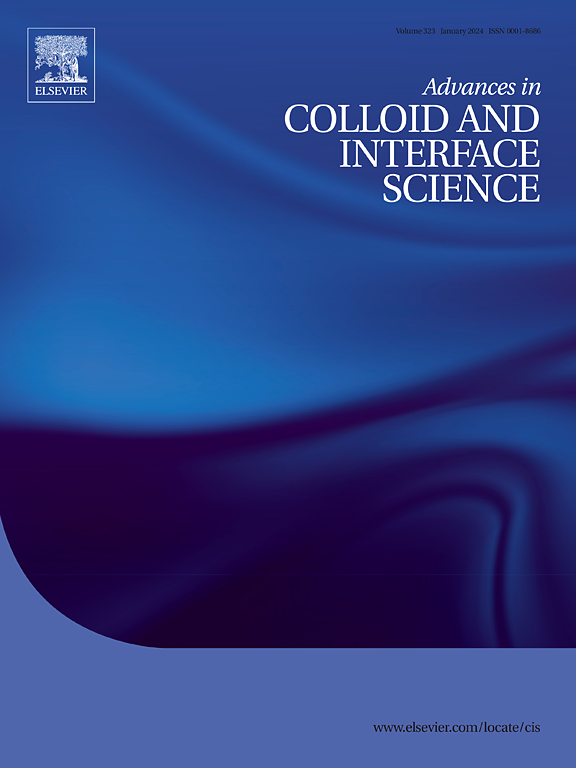Unravelling the therapeutic properties of aptamer-modified exosome nanocomposite
IF 15.9
1区 化学
Q1 CHEMISTRY, PHYSICAL
引用次数: 0
Abstract
Exosomes are naturally occurring nanocarriers derived from various cells. In recent years, they have attained significant attention for their potential in precise drug delivery and therapeutic applications. Exosomes exhibit several advantages, remarkably improved stability, bioavailability, and delivery efficiency, which are further augmented by integration with nanomaterials. Functionalizing the aptamer and nanomaterial on the exosomal surface significantly improves the binding affinity and specificity. Here in this review, we examine the synergistic therapeutic effect of exosome-nanomaterial-aptamer conjugate with particular attention to their uses in cancer therapy, bone fracture regeneration, wound healing, etc. Recent advances in the field demonstrated that the amalgamation of different nanomaterials, aptamers, and exosomes has proven to be a transformative approach in the field of therapeutics. Here in the nanocomposite, the aptamer is exclusively used as a recognition molecule to provide specificity to the target cells. Exosomes serve as biocompatible nanocarriers, and different nanomaterials (AuNPs, AuNRs, SiNPs, Graphene, etc.) complement the therapeutic efficiency by PTT/PDT/ROS generation/SO generation, etc. Briefly, the above-mentioned nanocomposite serves as the perfect therapeutic agent by utilizing the exosome's biocompatibility, aptamer's high affinity and nanomaterial's multifunctionality. Furthermore, the challenges and limitations of this nanocomposite have been discussed, along with its prospects in clinical practices.

揭示适配体修饰的外泌体纳米复合材料的治疗特性
外泌体是自然产生的纳米载体,来源于各种细胞。近年来,它们在精确给药和治疗应用方面的潜力引起了人们的极大关注。外泌体具有几个优势,显著提高了稳定性、生物利用度和递送效率,并通过与纳米材料的整合进一步增强了这些优势。在外泌体表面功能化适配体和纳米材料可显著提高其结合亲和力和特异性。在这篇综述中,我们研究了外泌体-纳米材料-适体缀合物的协同治疗作用,并特别关注它们在癌症治疗、骨折再生、伤口愈合等方面的应用。该领域的最新进展表明,不同纳米材料、适体和外泌体的融合已被证明是治疗领域的一种变革性方法。在纳米复合材料中,适体被专门用作识别分子,为靶细胞提供特异性。外泌体作为具有生物相容性的纳米载体,不同的纳米材料(AuNPs、AuNRs、SiNPs、石墨烯等)通过PTT/PDT/ROS生成/SO生成等方式来补充治疗效果。综上所述,纳米复合材料利用外泌体的生物相容性、适体的高亲和力和纳米材料的多功能性,可以作为理想的治疗剂。此外,还讨论了这种纳米复合材料的挑战和局限性,以及它在临床实践中的前景。
本文章由计算机程序翻译,如有差异,请以英文原文为准。
求助全文
约1分钟内获得全文
求助全文
来源期刊
CiteScore
28.50
自引率
2.60%
发文量
175
审稿时长
31 days
期刊介绍:
"Advances in Colloid and Interface Science" is an international journal that focuses on experimental and theoretical developments in interfacial and colloidal phenomena. The journal covers a wide range of disciplines including biology, chemistry, physics, and technology.
The journal accepts review articles on any topic within the scope of colloid and interface science. These articles should provide an in-depth analysis of the subject matter, offering a critical review of the current state of the field. The author's informed opinion on the topic should also be included. The manuscript should compare and contrast ideas found in the reviewed literature and address the limitations of these ideas.
Typically, the articles published in this journal are written by recognized experts in the field.

 求助内容:
求助内容: 应助结果提醒方式:
应助结果提醒方式:


